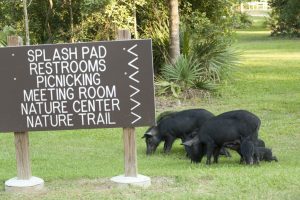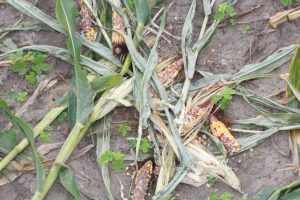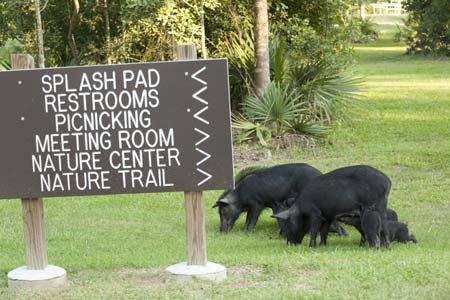CLEMSON, S.C., March 2, 2015 – A survey designed by Clemson University researchers to begin to quantify the economic and ecological damage caused by feral hogs will soon start showing up in the mailboxes of many South Carolina farmers and rural landowners.
The survey data will help inform a feral hog-management strategy that will be imparted to landowners across the Southeast through a future series of workshops and outreach efforts.
Past studies indicate that feral hogs cause an estimated $1.2 billion per year of economic damage in the U.S., but there is no data on the damage they are causing in South Carolina.

Image Credit: USDA Animal and Plant Health Inspection Service
By filling out and returning the survey, participants can help wildlife management professionals with efforts to control an invasive species that is damaging the state’s natural resources and agricultural infrastructure, said Shari Rodriguez, a Clemson wildlife biologist specializing in wildlife conservation on private lands.
“Feral hogs and the damage they cause are a huge and growing problem in South Carolina and across the Southeast, and this survey is the first step in understanding the complexity of the problem and designing strategies to control their populations and reduce their impact,” said Rodriguez.
The survey asks landowners questions about issues they are having with feral hogs, what techniques they currently use to control hog populations and whether they see the hogs as a benefit or a nuisance.
The researchers will compile and analyze the data and submit a report to the U.S. Department of Agriculture by March 2016.
Saying feral hogs multiply like rabbits grossly underestimates their breeding power. Sows can have four litters per year of up to 13 piglets, and they reach sexual maturity at an early age and have few natural predators.
The hogs prey on wildlife and livestock and consume agricultural crops, and their rooting, wallowing and nesting behavior decreases water quality and promotes soil erosion. They can carry zoonotic diseases, such as foot-and-mouth and swine brucellosis. They also damage the state’s timber industry by depleting soil nutrients and consuming seeds, sprouts and seedlings, which prevents reforestation. There’s also evidence that they may contribute to the spread of tree diseases.
Some South Carolina farmers report massive crop damage and hire teams of hunters with high-powered rifles to keep from being overrun. Horry County residents have reported wild hog sightings in some neighborhoods, and hogs have been toppling garbage cans and scaring children in the Atlanta suburbs.

Image Credit: Marion Barnes, Clemson Extension
“Individual landowners and local communities can have an impact on reducing feral hog population numbers and damage. We want to determine the best practices in controlling this species, understand the ecological and economic damage to natural resources and give stakeholders the resources and support they need to help solve this problem,” Rodriguez said.
Landowners experiencing feral hog damage who were not selected to participate in this study are encouraged to provide details of the damage to their local extension agent or to Rodriguez at slrodri@clemson.edu.
This research is a collaboration between the USDA Natural Resources Conservation Service, USDA Wildlife Services, South Carolina Farm Bureau and South Carolina Wild Hog Task Force.

